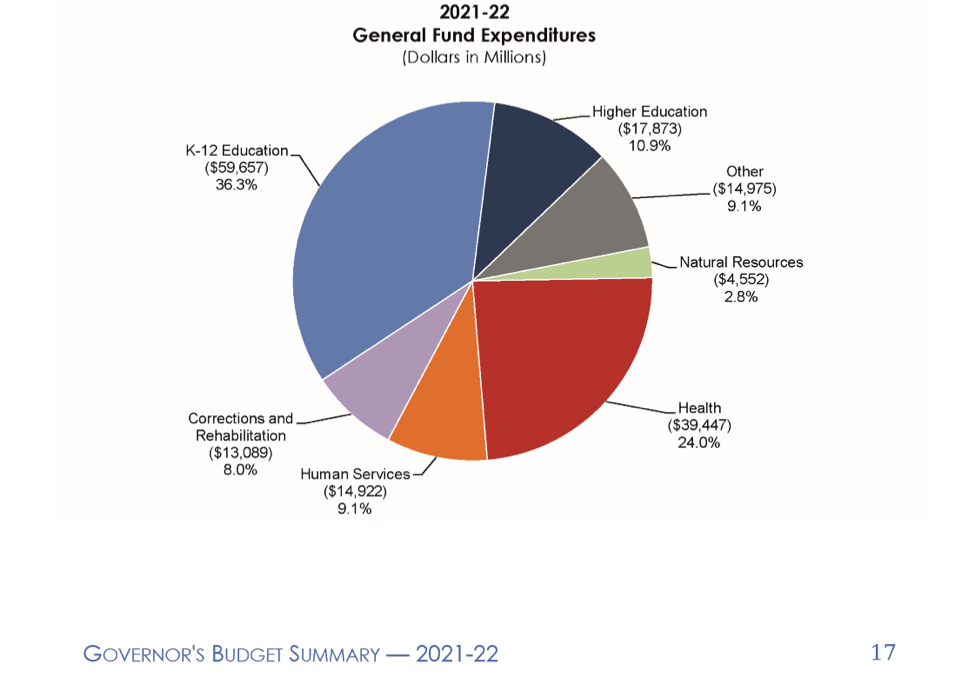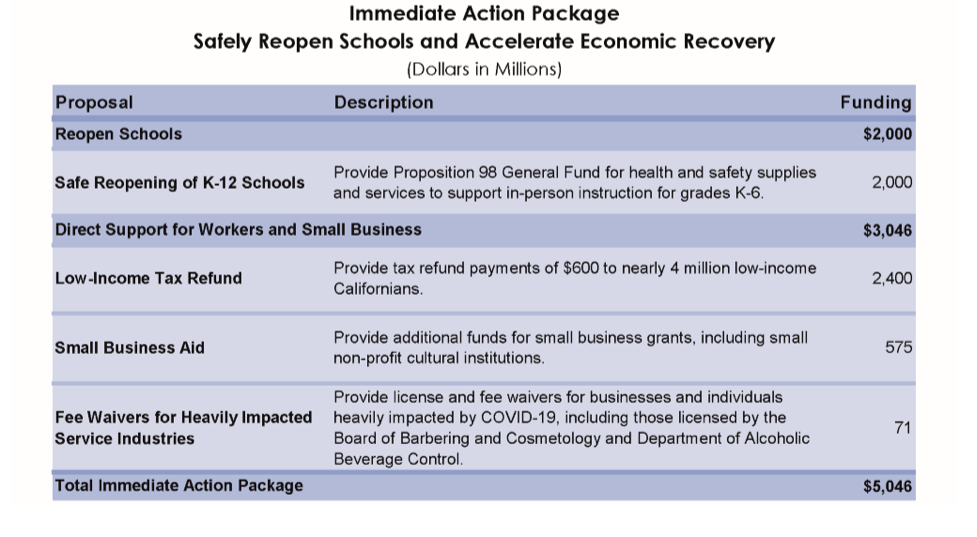After the chaos and violence that ascended upon our nation’s capital last week, it may have been lost in the headlines that the leader of the 5th largest economy in the world unveiled a 2021-2022 budget proposal on Friday. While the announcement may have been overshadowed, the California state budget is more relevant than ever. This is the hopeful year of COVID-19 recovery and rebuilding, and it is critical to know what Governor Gavin Newsom’s priorities are for the Golden State – especially concerning homelessness and housing.
Big questions loom: how will the state support schools re-opening, distribute vaccines quickly, prevent renters from being evicted, and get emergency assistance into the hands of hungry families? And possibly the most important question for those of us focused on the crisis that predates the pandemic: what are the proposed resources for housing and homelessness?
Where Does the Money in California’s Budget Typically Go?
It is with some relief alongside some extreme caution, that California leaders have a better-than-anticipated budget picture for 2021. A surplus this year is welcomed, but a multi-year deficit, possibly reaching $17 billion, is not too far behind. Education, health and human services, transportation and corrections/rehabilitation are some of the broad categories that the state allocates most of its general fund dollars to maintain current programs.

Immediate Action
Perhaps the most eye-catching part of Newsom’s proposed budget is the $14 billion dollar investments he would like to make into California’s equitable recovery from COVID-19, with immediate action being requested from the legislature in the following areas:

Housing and Homelessness in the Budget
While the most timely priorities are jumpstarting an economic recovery and safely reinstating in-person education here are a few highlights from the Governor’s budget summary that aim to support those households experiencing homelessness and very low-income Californians:
Project Homekey: Last year, the state used a mix of federal, philanthropic, and state dollars to stand up an aggressive motel/hotel acquisition program that is projected to create 6000 new units of permanent and interim housing for COVID-vulnerable homeless Californians. The Governor is proposing $750 million additional dollars to continue the unprecedented success of Project Homekey this year.
Housing for Very Vulnerable Populations: The budget proposal includes a one-time allocation of $1 billion for the acquisition and building of housing specifically for people who need behavioral health treatment settings and for low income vulnerable seniors. These could be short-term crisis care settings and long-term care environments often referred to as board and cares or adult residential facilities. The disappearance of housing specifically for people with complex medical and mental health needs who can no longer live independently has been viewed as a growing crisis statewide.
Protecting tenants at risk of eviction: To keep renters who were impacted by the COVID-19 crisis safely housed, the state passed AB 3088, which had provisions that prevented certain types of evictions until January 31, 2021. Due to the ongoing severity of the pandemic, both the governor and key state legislators are immediately calling for an extension of AB 3088. The state and its larger local governments are set to receive a total $2.6 billion of the $25 billion rental relief program administered by the Treasury Department, which could further stabilize at-risk renters.
Affordable Housing Programs: Governor Newsom proposes new investments of $500 million in the state’s Infill Infrastructure Grant Program and an additional third round of $500 million in low-income housing tax credits to spur the development of affordable housing and reduce the massive gap in units available for qualifying low-income households. State leaders are also proposing streamlining measures that would make the application and environmental review process faster for these projects.
The Takeaway
It is no easy task to balance the competing budget priorities of 2021 in a state faced with many urgent issues. The state of California has a lot to juggle, and while housing and homelessness funds are not topping the list of “immediate action” priorities, Governor Newsom has asked the legislature to take early action on Project Homekey. This urgency, combined with the above investments, shows promising steps for the future.
One thing is certain – the cure for our housing and homelessness crisis needs to be viewed as a long game: creating reliable, ongoing funding streams, and long-term plans that can be nimble, but still lay out a solution blueprint for the future.
Governor Newsom’s 2021 budget proposal embraces the importance of building out physical homes for people to live that can become long-term features of homeless re-housing systems across California. It also confronts the long-neglected issues of licensed care settings that serve highly vulnerable groups who may have been homeless or could easily fall back onto the streets without these intensive interventions. However, the proposed budget continues to default to one-time grants instead of sustained funding that is more comprehensive. It also includes households loosely defined as “at-risk of homelessness” without targeting the response to people most at risk: those who are already homeless.
The Alliance is hopeful that a bridge can be built between the current short-term plans to movements like the Bring California Home Campaign and Roadmap HOME 2030, which together, lay out a bold longer-term plan that would transform the state’s response to housing and homelessness. The time is now. If not now, when?

